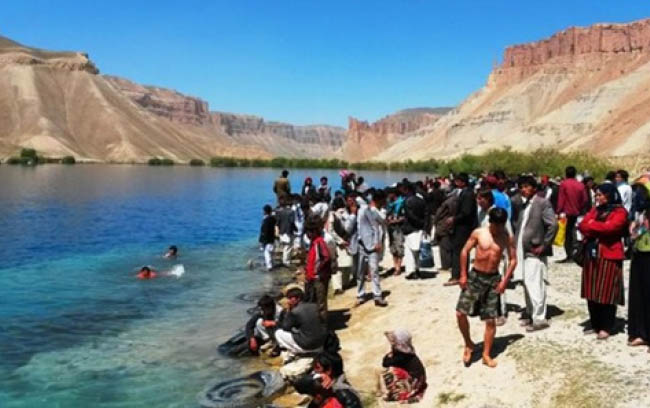In 2014, Bamyan joined UNESCO Creative Cities Network (UCCN) which invited 47 cities from 33 countries as part of the network in seven creative fields — crafts and folk art, design, film, gastronomy, literature, media arts and music.
Bamyan is known for traditional handicrafts such as carpet weaving, sculpting and folk art, while the Cultural Landscape and Archaeological Remains of Bamyan was inscribed on the UNESCO World Heritage List in 2003. Bamyan was also recognized as the Cultural Capital of South Asian Association for Regional Cooperation (SAARC) for the year 2015.
The UCCN is a flagship program of UNESCO for the implementation of the Sustainable Development Goals (SDGs) of the 2030 Agenda, and the New Urban Agenda, at the local level. The 2030 Agenda for Sustainable Development adopted by the international community in September 2015 highlights culture and creativity as key levers for sustainable urban development. The Network serves as an essential platform to contribute to the implementation and achievement of this international agenda.
By joining the Network, cities commit to collaborate and develop partnerships with a view to promoting creativity and cultural industries, to share best practices, to strengthen participation in cultural life, and to integrate culture in economic and social development strategies and plans. Joining UCCN does not necessarily mean that Bamyan has reached its final objective, i.e., the welfare for citizens, but this reflects the existence of potential for sustainable development. The instrumental role of cities in national development is no more a mystery for the public. The blossom of a city at international level is a short cut for the development of other cities as well. States seek to reap the advantages of cities’ economic competition at international level so as to enhance the condition of citizens’ life and national economy.
Unluckily, one year after Bamyan’s membership in the UCCN, there was no increase in development or regular budget. Moreover, Bamyan is one of the most deprived provinces of Afghanistan since sanitation is in an inappropriate condition, there is no access to clean drinking water, not enough infrastructure, no national project is under construction at provincial level, no access to electricity, half of the children at school age are deprived from getting education, and 40 percent of girls get married under the age of 18. There is no basic urban services in Bamyan, whereas the population of a creative city do not spend all their energy in satisfying their basic needs. A creative city will pave the ground for citizens to learn skills and creative thoughts. Bamyan has large capacities for the country’s development which is simply ignored. In fact, being a member of a global network is not a ceremonial issue. A city needs to meet the international criteria through sustainable struggles to keep its position safe as member of UCCN.
The increasing urbanization and the growth in the feature of cities have generated many problems. The Creative City seeks to reach urban development through exploiting culture and economy. That is to say, creative cities will build cities as the hotbed of creativity and culture and cities where the public activities bear enough variety, beauty, and attraction for promoting talents, innovation and ideas.
Historically, cities have always relied on the creativity of their creative circles, such as economic agents, artists, students, etc. to generate wealth. In fact, the vital and dynamic potential of a city by which it generates wealth, knowledge, arts, etc. is considered the creativity of citizens. Take, for example, the cities of Balkh, Bamyan, and Herat which were not only the hotbed of growth and prosperity of great individuals such as Rumi, Naser Khosrow, and Avicenna but also the richest cities of their time in the realm of culture and economy. A creative citizen needs a safe and prosperous atmosphere where s/he can nourish their talents. If a society does not encourage citizens to grow their talents, creativity will not be actualized. Only the city will develop that has enough facilities and dynamic and various system regarding the growth of individuals’ talent from all segments of society.
The government is supposed to play the role of a facilitator for better use of the capacities and resources of creative cities. Directing development projects, correcting and activating banking system, backing private sectors and NGOs, encouraging domestic and foreign investors, investing in technology and environment will be highly effective. Due to the international nature of creative cities, the role of government is very important in international relations and interactions. Government must provide tourists with services such as visa services, ticket services, travel advice, etc.
By joining the Network, selected cities commit to joint collaboration of creative cities around the world as a way to enhance and promote creativity, share best cultural practices, and integrate culture in economic and social development plans.
The particular characteristics of creative cities will increase the number of tourists which will develop a country’s economy. Hence, all citizens, mainly urban specialist and managers, will have to support the city to gain sustainable development.
Home » Opinion » The Potential of a Creative City for Development
The Potential of a Creative City for Development
| Mohammad Amin Byani

